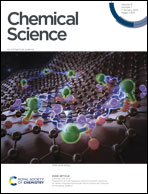Interface regulation of the Zn anode by using a low concentration electrolyte additive for aqueous Zn batteries†
Abstract
The Zn metal anode in aqueous Zn batteries faces a number of challenges including instable deposition and corrosion issues. Here, we present an interface environment regulation for a Zn electrode with a low concentration electrolyte additive of 0.1 m 3-aminobenzenesulfonic acid (ASA). ASA prefers to adsorb on the Zn surface over water and creates an ASA-rich interface. It further enters the Zn2+ solvation sheath locally, which shifts the lowest unoccupied molecular orbital from solvated water to ASA. The hydrogen evolution reaction from solvated water reduction is inhibited, and the reduction of solvated ASA generates a stable solid-electrolyte interphase composed of the ion conductor ZnS covered by organic–inorganic mixed components. With the resulting homogenized Zn deposition, continuous Zn stripping in symmetric cells reaches 99.7% depth of discharge (DOD) at a current density of 2 mA cm−2, whereas cell short-circuit takes place at 11.4% DOD in the ASA free ZnSO4 electrolyte. The repeated stripping/plating also realizes 1100 h cycle life at 2 mA cm−2, and a 99.54% stabilized coulombic efficiency is obtained for 500 cycles at 10 mA cm−2.



 Please wait while we load your content...
Please wait while we load your content...